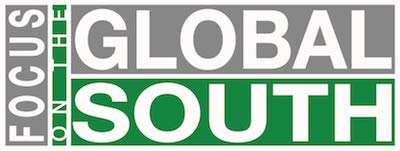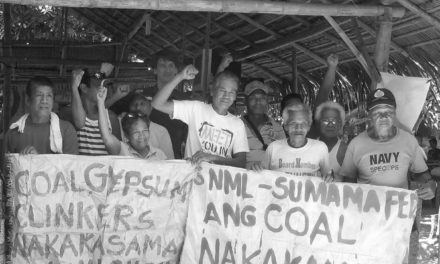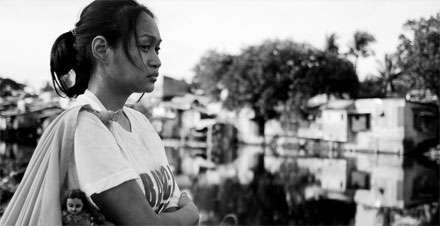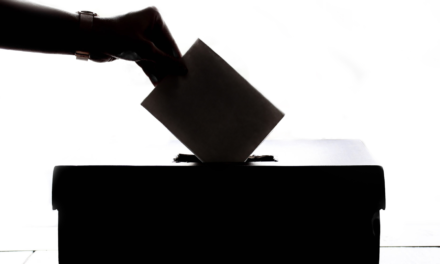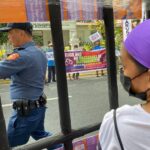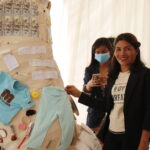By Herbert Docena*
BEIRUT (August 14) – Hussein Choumer hangs around one corner in the district of Haret Hreik in the southern suburbs of Beirut. Around him are mountains of rubble, the remains of over 100 mostly 10-storey residential buildings flattened by Israeli missiles now turned monuments of destruction. Books, towels, washing machines, and mattresses are strewn on the streets, covered with a thick film of powdered concrete and ash. The last page in a calendar shows the day it all started: July 12; the hands of the clock in one shop is stuck at 12:25. The air is redolent with the strange mix of filth and gunpowder.
Hussein, his wife, and three children used to live here. His house is gone. And yet, “I consider my loss as nothing,” Hussein says. “What matters is that our brothers are fighting in southern Lebanon fighting. And as they fight, they’re giving me back my home.” Two hours later, a volley of Israeli bunker-buster bombs once again hit the neighborhood.
Sixty of the thousands of families who lost their homes in these suburbs have camped out in a school in central Beirut. Outside, a large picture of Hezbollah’s leader Sheik Hassan Nasrallah hangs at the center of a clothesline over the narrow street. The atmosphere inside is anything but despondent. Over a hundred children are running around the small courtyard playing. In a little while, they burst into a chant “We love Nasrallah!” The adults follow. These families have just lost everything. They’re having the time of their lives.
With over 1,400 dead, more than 3,000 wounded, over a million displaced, and entire districts and villages in ruins, Lebanon today marked the “cessation of hostilities” with a heady mix of awe and anxiety, lamentation and celebration.
Hussein’s and the displaced families’ steadfastness is perhaps among the most visible manifestation of how Israel failed to achieve the military objectives behind this war. If the point of the massive thirty-day aerial bombardment and leveling of villages was meant to strike fear in people, as many Lebanese believe, then the result may have been the opposite.
In the south, site of the most intense fighting and devastation, the sound of explosion came from firecrackers and celebratory gunfire instead of from artillery and bombs. Beginning at 8:15 in the morning, or barely fifteen minutes into the ceasefire, thousands of families began streaming back to their emptied towns. If the aim of Israel was to conduct ethnic cleansing in the south, then the effort seems to have failed for now.
“The Hezbollah offers its victory to the Lebanese people,” says Dr Ali Fayyad, a member of the political bureau of the Hezbollah. It has been an offer that many in Lebanon seems to have readily accepted. At night, at exactly the same time that US President George Bush was on TV calling the Hezbollah “terrorists who want to deprive the Lebanese freedom,” convoys with young people were driving around Beirut’s streets, blaring their horns, cheering wildly, and waving Hezbollah’s and Lebanon’s flags. In street corners, young and old alike gathered in small crowds to hand out Nasrallah’s pictures to passing motorists.
Despite persistent attempts to cast the Hezbollah as an isolated “terrorist organization” of Shia Muslims, majority of the Lebanese population — including Christians and Sunni Muslims — have thrown their support behind the group. In one recent local survey, 87% of the population was reported to be supporting the Hezbollah, including four out every five Christians and Druze and nine out of every ten Sunni Muslims.
But while most Lebanese acknowledge Hezbollah’s leading role in fighting is Israel, what many Lebanese consistently refer to as the “national resistance” is a broad coalition that includes virtually all of Lebanon’s most important political forces, including Amal, the other main Shia movement, the Lebanese Communist Party (LCP), other left groups and liberal democrats — and even the right-wing Free Patriotic Movement of General Michel Aoun.
“We have a joke that, in the average Lebanese family with seven children, four will children be with the Hezbollah, two will be with the communist, and one will be with Amal — all of them with the resistance,” shares Khaled Hadadeh, secretary-general of the LCP.
The LCP, a leftist secular party whose memberships cuts across the confessional lines, has itself been very close to the Hezbollah and fought alongside them in the frontlines in the south. According to Hadadeh, at least 12 LCP members and supporters died in the fighting.
The war was not, as was frequently reported, just between Israel and Hezbollah. Contrary to Bush’s claim that the Hezbollah actions have been in defiance of Lebanon’s government, the Lebanese government, since the outbreak of war, has consistently supported the Hezbollah’s positions and demands. Hezbollah for its part has vowed to abide by the Lebanese government’s concessions.
Most Lebanese believe that it is this unity among the otherwise divided Lebanese groups that ultimately inflicted defeat on Israel. “This unity is especially significant because Lebanon has been a country that’s been at war with itself,” points out Anwar Al-Khalil, a member of parliament from Amal. The groups who now comprise the “national resistance” were at opposing sides of Beirut’s dividing lines during Lebanon’s civil war in the 80s and 90s.
Lebanese President Emile Lahoud, a Maronite Christian said: “We have come out of this stronger, more united than ever before. Israel would now think twice before coming to attack us again.” If Israel’s aim was to foment Lebanon’s sectarian and religious divisions in the hope of pitting the Christians and the Sunnis against the Hezbollah, then the strategy may have backfired.
Despite the celebrations, however, the Lebanese are not even done counting their dead. “This victory came with a heavy price,” says Hadadeh. “Now we’re still calculating how much we have paid.”
Ayoub Hmaied from Bint Jabeil, one of the towns at the heart of the clashes in the south, rattled off a list of villages where Israel’s missiles led to a massacre of civilians: Bekaa, Brital, Haissa, Srifa, Qana, Ashaiya… At 6 AM, just two hours before the “cessation of hostilities” took effect, Israel bombed Israel’s southern suburbs in what seemed like a coup de grace for this phase of the war.
“We are now in a cloudy time,” says Al-Khalil. “We cannot say we have arrived at the end.”
For now, though, the Lebanese are still in awe at what they have achieved. As many Lebanese like to remind their guests these days, in 1967, it took only six days for Israel to defeat all of the Arab armies combined. Now, even after thirty-three days of massive and unrelenting bombardment, what they call their “national resistance” is still standing.
Considering that Israel is said to be the world’s most powerful military and the recipient of billions of dollars in cutting-edge military technology, points out Hezbollah’s Fayyad, that is no mean feat.
And this, believes Nahla Chahal, a half-Iraqi, half-Lebanese activist, is why Hezbollah is so threatening to Israel and the United States. “They show not only that it’s possible to resist but that it’s possible to resist and win.”
*Herbert Docena is a Research Associate with Focus on the Global South. He is in Lebanon now as a member of the International Peace and Solidarity Mission.
